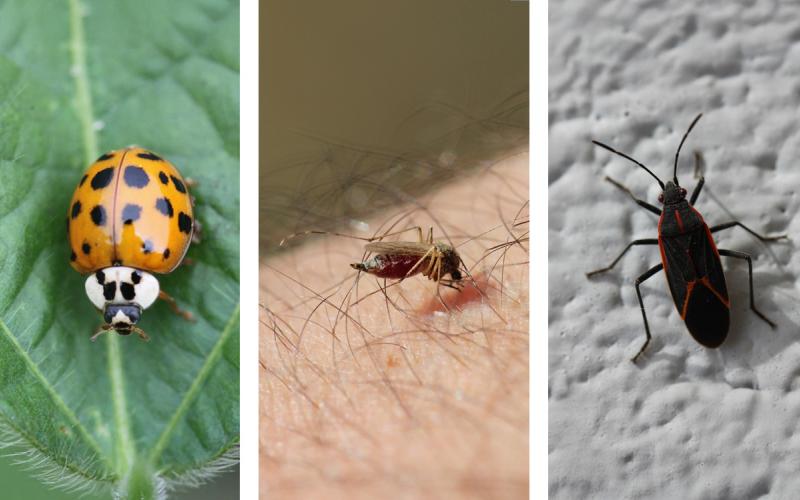Soybean aphid populations have been observed in neighboring states and in very small populations in South Dakota (Figure 1). Although no sustained populations or rapidly increasing populations have been observed, it is a good reminder that soybean aphid scouting should occur throughout the growing season to prevent population outbreaks and yield loss.
Scouting for Soybean Aphids

There are two methods that can be used to effectively scout for soybean aphids:
Traditional Scouting
The first option is the traditional method where 20 plants from multiple locations spread throughout a field are examined for soybean aphids.
When soybean aphids are present, they are counted and the total number of infested plants and the number of soybean aphids per plant are recorded. Management is necessary when at least 80% of the plants are infested with 250 or more soybean aphids. One of the issues with this method is that it can be time consuming.

Speed Scouting
Speed scouting for soybean aphids is an alternative to using the traditional method of counting all of the aphids present on scouted plants. Speed scouting is a binomial sequential sampling program that is actually based off of the 250 threshold. It was designed to provide a method of scouting that would save time, but still provide accurate management decisions.
The speed scouting method uses a decision population of 40 aphids per plant, and is accessible either through a worksheet (Figure 2) or a phone app called Aphid Speed Scout.
To use the speed scouting method, you first assess the soybean aphid populations on 11 random plants while walking in a “W” or “Z” pattern in the field. For each plant, if it has less than 40 soybean aphids you put a “-” on the line and if it has more than 40 you put a “+”. After 11 plants are examined you tally up the “+”s. If there are 6 or less you have reached a do no treat decision for the field. If there are 11, you have reached a treat decision. However, it is necessary to reevaluate the field 3-4 days later to confirm that the population is still present before an insecticide application is applied. If 7-10 “+”s were observed additional plants must be scouted. This method reduces the number of aphids that must be counted on a plant and provides accurate management decisions.
Management
If management is needed due to reaching the 250 soybean aphids/plant threshold, insecticide application is recommended. Currently registered insecticides for management of soybean aphid in soybean are listed in the latest South Dakota Pest Management Guide: Soybeans. Pyrethroid resistant soybean aphid populations have been documented in several counties throughout South Dakota. For this reason, if you choose to spray a pyrethroid insecticide for soybean aphid management closely monitor the population to ensure the insecticide was effective. Alternatively, select an insecticide with a different active ingredient.


